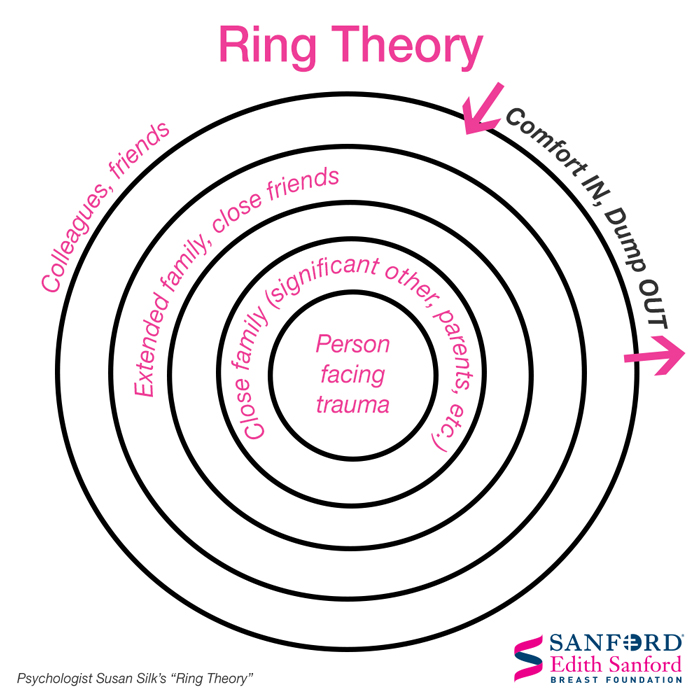How well do you ask for help? If we did a word association right now and I said the word help, what would be the first 5 words that come to mind?
I work a lot with leadership teams that are full of achievement minded, smart, goal oriented, and passionate leaders. One way I know the team is working is when I see one of those leaders openly admit they are stuck and ask for some time with the team to talk through the issue and help them get unstuck. I also watch for avoiding it, and if I see it I will make sure it gets named and talked about. It is when my job of helping teams have a productive conversation gets tough, and yet it is in these conversations that leaders are made and teams get healthy.
One of my 2018 summer reading list for leaders, I recommended Option B by Sheryl Sandberg and Adam Grant. In this book, they share a model called the Ring Theory by Susan Silk. It is a graphic representation of the rolls of different groups around a situation that generates trauma. The use is pretty simple, those closest or most impacted by the trauma go in the middle, and each ring contains the names of individuals or groups impacted by the trauma. The farther you are from the middle, the less impact it has on you emotionally. In Sandberg’s situation with the death of her husband, she put her children in the middle, herself and his parents/siblings in the next ring, and then different groups after that. The tool is simple, create the ring and comfort in, dump out. Dumping is unloading the emotions the situations is causing and/or asking or accepting help from those that are in outer rings.

The Ring Theory by Susan Silk
The lesson for leaders, when you drive change or have to react to change the market exerts on your organization, it is often helpful to look at it through the lens of the Ring Theory because of the emotions that are generated. Have you ever been in one of these conversations:
- Restructuring a team due to growth, resulting in dividing up teams and changing leaders around
- Firing a well liked person
- Firing someone you hired, maybe a friend
- Trying to support someone who is going through one of the big three life stressors – death, divorce, job loss
All these situations, some sort of loss is created for people that requires work and time to heal before people can return to a a more normal state of productivity and joy. I have watched many leaders go through a similar situation in leading change, where they are focused in (their team members or teams), and not asking for help or accepting help. The Ring Theory is a reminder that those resistant forces often require us to dump out be seeking or accepting support from others.
The trick is, support in only works when people ask for or accept help. Effective leaders do it, and the rest treat help like a four letter word and avoid it at all costs, even though their need is obvious to all.
So let’s adjust the question: Do you act like HELP is a four letter word?
Lead well!
